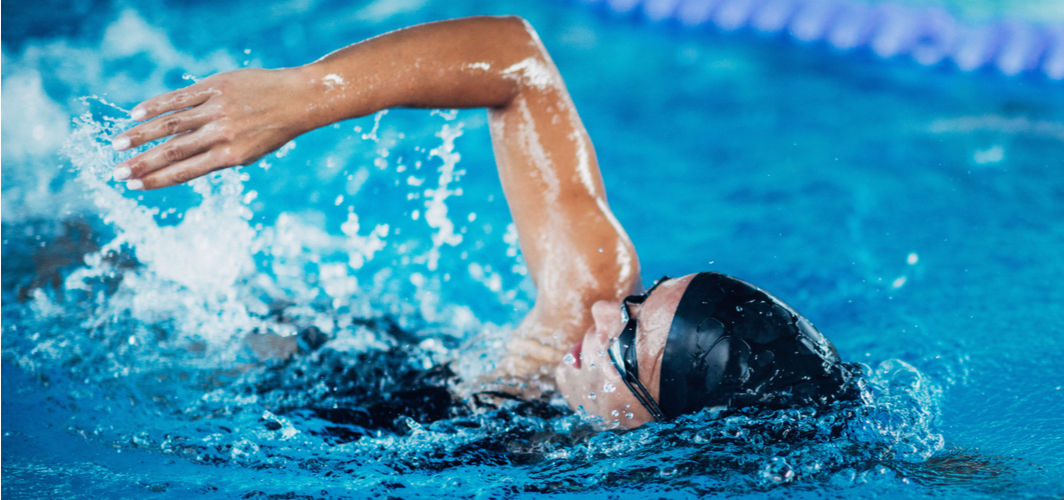Orthopedic Conditions
What Is Swimmer’s Shoulder and How Is It Treated?
4 min read
By Apollo 24/7, Published on - 13 August 2021, Updated on - 18 October 2022
Share this article
0
47 likes

Swimming is a unique sport in which the shoulder joints propel the body weight against the resistance of water. Swimming requires a maximum range of motion and flexibility because of which it can sometimes cause increased shoulder laxity or instability. Swimmers often complain about problems with their shoulders, and the ‘swimmer’s shoulder’ is one of the most notable conditions. Swimmer’s shoulder occurs due to repetitive stress on the shoulder joint, causing sharp pain and limited range of motion. Fortunately, the treatment is conservative in most cases and includes medications and muscle strengthening exercises.
Understanding more about swimmer’s shoulder
The shoulder is one of the most mobile and complex joints in the body that is designed to allow an extensive range of motion. Unfortunately, it is also an unstable joint because of this mobility. Additionally, the structure in itself is vulnerable to injuries. While swimming provides the greatest benefits in its low impact on most joints, a swimmer’s shoulder is a common joint injury that affects both recreational and competitive swimmers.
Swimmer’s shoulder, also known as shoulder impingement, is a type of tendonitis which causes inflammation and swelling of the tendons. The inflammation occurs in the tendons of the rotator cuff, a group of muscles and tendons surrounding the shoulder joint. The inflamed tendons can, in turn, press on the surrounding bones, muscles, and other tendons. These tendons are also known to exert pressure on the acromion (the outermost bony projection of the shoulder blade). This can cause friction on the shoulder blade that leads to the development of bony growths known as bony spurs.
Causes of swimmer’s shoulder
Swimmer’s shoulder occurs due to repetitive use of the shoulder joint, irritating the tendons and muscle tissue. Small tears are known to develop leading to inflammation and scar tissue formation. This can cause trouble moving the shoulder joint smoothly. The swimmer’s shoulder can also cause a tear in the rotator cuff if left untreated.
Though the condition is common in swimmers, it can also develop in people who repeatedly use their shoulders to lift or reach overhead. Baseball and volleyball players, tennis players, construction workers, and electricians are also prone to this type of shoulder pain.
Symptoms of swimmer’s shoulder
The symptoms of swimmer’s shoulder can occur suddenly or gradually and include:
- Limited or reduced range of motion compared to the other shoulder
- Shoulder instability and reduced strength
- Pain that radiates along the back or front of the shoulder
- Pain that worsens when the arm is lifted above the head
- Shoulder or arm weakness
- Increased laxity of the shoulder joint.
Diagnosis of swimmer’s shoulder
A physical examination and review of the symptoms will be carried out by the doctor. The shoulder area may be pressed to check for pain, swelling, and tenderness. Imaging tests may be prescribed for severe bone or soft tissue injuries. These tests may include X-rays to detect fractured or dislocated bones, and CT scan or MRI (magnetic resonance imaging) to detect tendon tears.
Treatment and management of swimmer’s shoulder
Adequate rest, activity modification, applying heating or cold packs, and taking pain relief medications are known to be effective in relieving the symptoms associated with swimmer’s shoulder.
Activity modification in swimming may include:
- Reducing training distance and frequency
- Altering the training patterns such that different strokes are applied frequently throughout the practice.
- Using swim fins to improve the propulsion from the leg and lower the pressure applied on the shoulder joint
- Avoiding the use of hand paddles or kickboards
Other treatment options include:
Physical therapy – Physical therapy aims to restore joint mobility. Stretches, strength training, and exercises to stabilize the joint can help to heal the injured shoulder joint. Exercises can also help prevent re-injury.
Ergonomic modifications – This involves changing the environment at home or work, to reduce repetitive movements that involve the shoulder. For instance, moving the items to lower shelves can help one avoid reaching overhead.
Steroid injections – Steroid medication is injected into the shoulder joint to reduce inflammation and provide pain relief rapidly and temporarily.
Most cases of swimmer’s shoulder may not require surgery. However, if all the other treatment approaches fail, surgery may be recommended to remove the inflamed tissue and extra bony growths in the shoulder.
Prevention of swimmer’s shoulder
The preventive measures may include:
- Avoiding activities that cause repetitive strain on the shoulder joint
- Following proper techniques when working or exercising
- Resting the tired or overused shoulder joint
- Performing stretches and warm-up exercises before swimming or other activities.
Conclusion
Shoulders are used for a lot of activities and so, occasional pain and stiffness are common. However, if the shoulder pain is affecting the daily activities and the ability to stay active, one should consult the doctor. There are several treatment options available, and most of them provide relief within a few months. In many cases, adequate rest and physical therapy are all that is required. Physical therapy is particularly important as it helps in balancing muscle groups, reducing symptoms, and possibly preventing future injuries. As the swimmer’s shoulder is an overuse injury, giving adequate rest to the body is important to expedite the healing process.
For any questions on musculoskeletal health including swimmer's shoulder, you can talk to an orthopaedician.
Orthopedic Conditions
Leave Comment
Recommended for you

Orthopedic Conditions
Stress Fracture: Causes and Self-care Measures
Stress fractures are common injuries associated with overuse and inadequate recovery time. The key to prevention is education and risk factor modification.

Orthopedic Conditions
Surprising but True! A Small Wound Can Result In Severe Bone Infection. Know how
Osteomyelitis is a severe bone infection that can destroy bone tissue. It occurs when an open wound exposes the bone to Staphylococcus aureus, a type of bacteria.

Orthopedic Conditions
Sharp pain in the heel? These could be the reasons!
Heel pain can occur due to stress or injury. However, it can be treated easily with the help of medical appliances, comfortable footwear, physical therapy, and medication.
Subscribe
Sign up for our free Health Library Daily Newsletter
Get doctor-approved health tips, news, and more.
Visual Stories

10 Foods That Are Unhealthy for Your Bones
Tap to continue exploring
Recommended for you

Orthopedic Conditions
Stress Fracture: Causes and Self-care Measures
Stress fractures are common injuries associated with overuse and inadequate recovery time. The key to prevention is education and risk factor modification.

Orthopedic Conditions
Surprising but True! A Small Wound Can Result In Severe Bone Infection. Know how
Osteomyelitis is a severe bone infection that can destroy bone tissue. It occurs when an open wound exposes the bone to Staphylococcus aureus, a type of bacteria.

Orthopedic Conditions
Sharp pain in the heel? These could be the reasons!
Heel pain can occur due to stress or injury. However, it can be treated easily with the help of medical appliances, comfortable footwear, physical therapy, and medication.